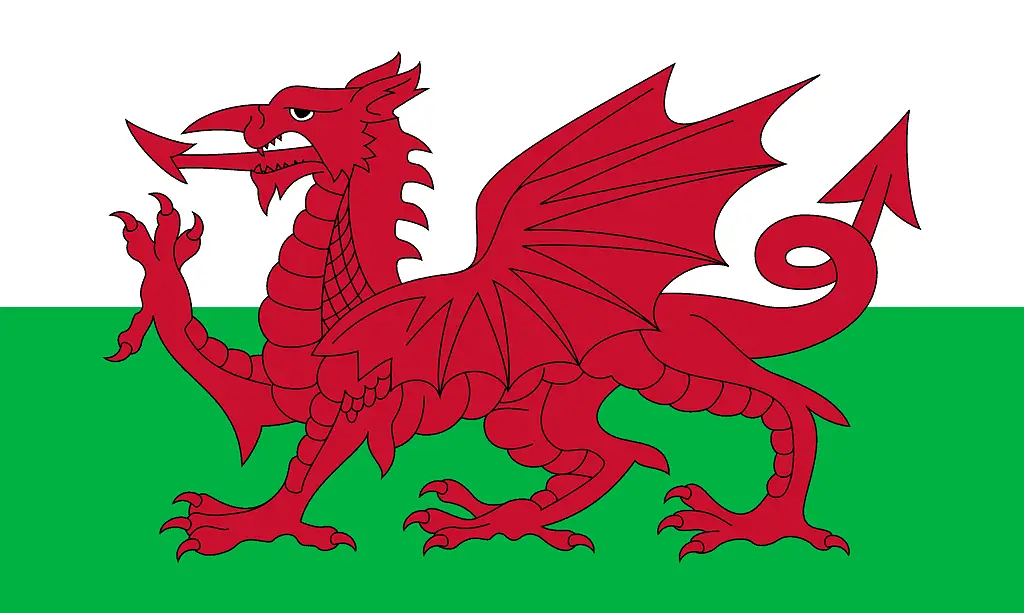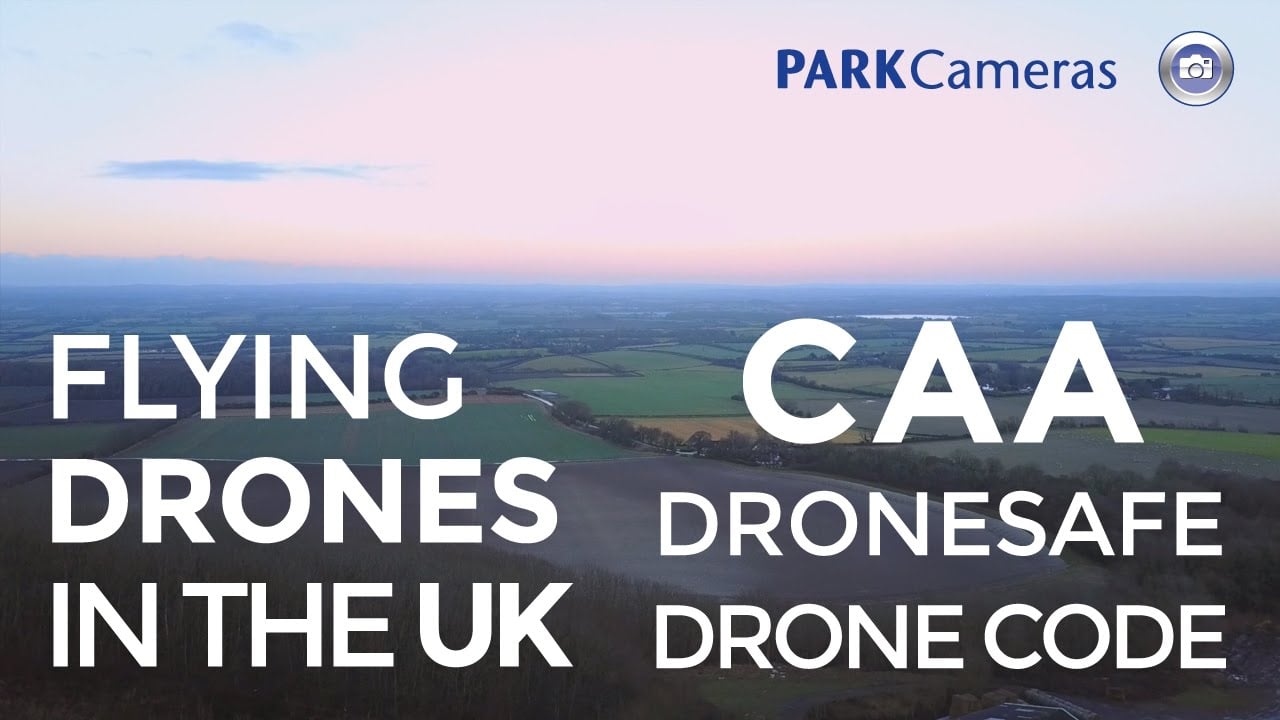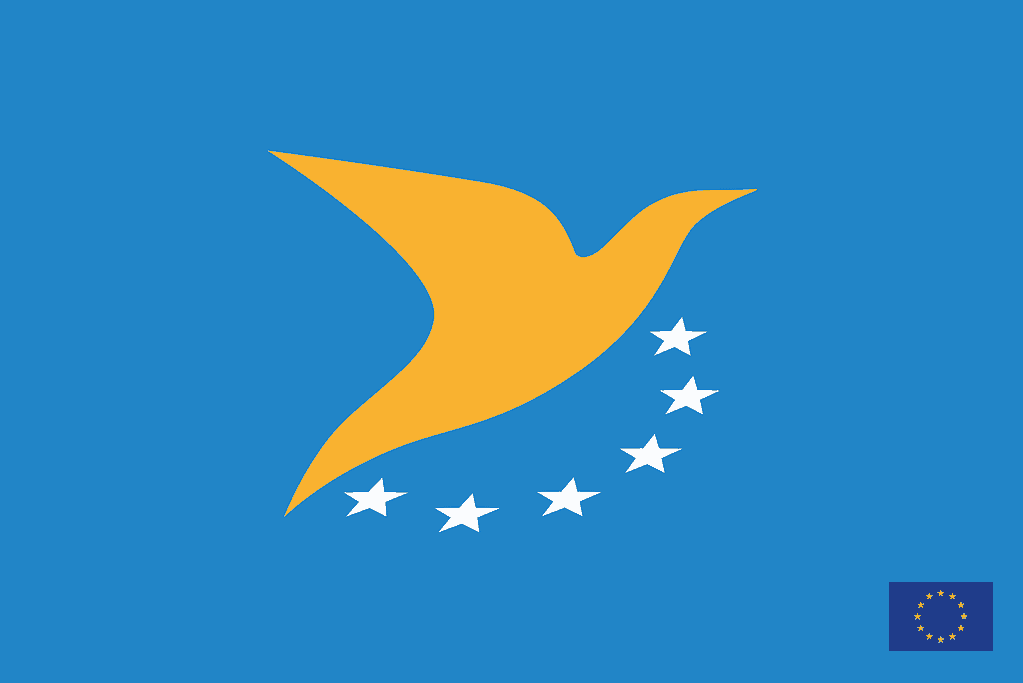Drone Laws in Wales
Hobbyist Drone Laws For Residents of Wales
Drone Operations in Wales are currently regulated.
- Hobbyist drone flights are allowed in Wales
- Hobbyist UK drone pilot license is not required except for certain operations
- Hobbyist Drone registration is required in Wales for hobbyists flying over 250g, or drone with a camera
- Drone Remote ID is not required in the Wales for hobbyists
- Drone Insurance is not required but recommended for hobbyists’ drone operations in Wales
Read below for more details on Hobbyist Drone Laws in Wales and to find links to regulators and other credible sources!
Agencies Responsible for regulating drones in Wales
Wales is a part of the United Kingdom. Wales follows UK Drone Rules.
Drone Regulator in The United Kingdom: Civil Aviation Authority of The United Kingdom
Contact Information
If you need additional details we have not covered or specific case help, contact the Civil Aviation Authority at:
- Address: Canary Wharf, London E14 4HD
- Phone: +44 0330 022 1908 (Monday to Friday 8:30am to 4:30pm), or +44 0330 022 1500
- Email: uavenquiries@caa.co.uk or drone.registration@caa.co.uk
Please continue reading for more details on UK Drone Laws.
Drone Laws UK – General rules for flying drones in Wales
The UK agency responsible for drone safety, CAA, has provided details on flying for fun or work. We enumerate the highlights below. For more details, click on the link above.
Are drones allowed in Wales?
Drone registration
You must register before flying most drones or model aircraft outdoors in Wales.
There are two requirements, and you may need to meet both:
- if you fly, you must pass a theory test to get a flyer ID
- if you’re responsible for a drone or model aircraft, you must register for an operator ID
You can get both your flyer ID and operator ID at the same time. Warning it is against the law to fly a drone or model aircraft without having the required IDs. You can also be fined for breaking the law when flying. In the most serious cases, you could be sent to prison.
Toys and small drones, and model aircraft
You do not need to register if you will only fly or use the following types of drone or model aircraft:
- toys below 250g or in C0 class
- those in C0 class with no camera, whether they are a toy or not
- those below 250g with no camera and no class mark, whether they’re a toy or not
Drones under 250g must still follow specific UK rules.
Look at the registration requirements for drones and model aircraft to determine if you need to register.
Drone License in Wales
Flyer ID
The flyer is the person who flies the drone or model aircraft.
You must pass an online theory test to get a flyer ID. The test is free. You should prepare for the test before you take it.
Children under 13
Children under 13 must also pass the test to get a flyer ID. For data protection reasons, they must register with their parent or guardian.
There’s more information in the children and parent guidance.
Operator ID
Operator IDs demonstrate an understanding of UK laws for flying drones.
The operator is the person responsible for managing a drone or model aircraft. This means they are responsible for maintaining it and ensuring that anyone who flies it has a flyer ID.
They are usually the person or organization that owns the drone or model aircraft, but not always. For example, if you are younger than 18 and own a drone or model aircraft, you must ask your parent or guardian to register for an operator ID. You will still be able to fly if you have a flyer ID.
The operator must:
- make sure that only people with a valid flyer ID use their drone or model aircraft
- label their drones and model aircraft with their operator ID
You must be 18 or over to register for an operator ID. You can use the same operator ID for all your drones and model aircraft.
You can register as an operator only if you are responsible for drones or model aircraft but will not fly them.
Prices
Getting a drone operator ID and gaining the necessary skills have costs.
| Registration | Cost | Valid for |
|---|---|---|
| Operator ID | £10 | 1 year |
| Flyer ID | £0 | 5 years |
Insurance requirements
Drones and model aircraft below 20kg
If you fly a drone or model aircraft below 20kg for recreation, sport, or as a hobby, you can choose whether or not to have insurance.
If you fly it for any other reason, you must have third-party insurance.
Drones and model aircraft 20kg and above
If your drone or model aircraft is 20kg or more, you must always have third-party insurance, no matter what you use it for.
Flying a drone in the Open Category
Unmanned Aircraft Systems (UAS) Regulations cover the flying of any ‘drone’ or model.
There are basic regulations for flying unmanned aircraft within the UK. Operating within these limits will ensure you remain in the ‘Open Category’, meaning that you do not need authorization from the CAA to fly. If you intend to operate outside these limits, you must first get Operational Authorization.
See guidance on the Specific Category for more information.
We describe the basic requirements for flying in the Open Category below:
- You must pass the online test, hold a Flyer ID, register as a UAS operator, and display your Operator ID on your UAS.
- You are responsible for flying your UAS in a safe manner
- While the UAS is flying, make sure you always see it to prevent collisions, especially with other aircraft.
- You must not endanger anyone or anything with your UAS
- You must not fly more than 400ft/120m above the surface
- To avoid breaking the rules, do not fly in the restricted area near an airport or any other airspace without permission. More information on airspace restrictions
- Your UAS must weigh less than 25Kg
CAA has published a series of factsheets to help explain the rules that will apply to your flying:
- Flying for fun CAP2003
- Flying as a hobby and at a club CAP2004
- Using a drone for work CAP2005
- Flying in the countryside CAP2006
- Flying in towns and cities CAP2007
- The difference with the new 2020 regulations CAP2008
They detail the full set of rules that you need to know about in the Drone and Model Aircraft Registration and Education System (DMARES) web pages. You must pass this test before you can fly your drone outdoors. There are some exceptions to this, which are detailed within the DMARES pages.
The Open category is divided into three ‘subcategories’, to specify certain rules for different types of flying. The category you fall into depends on the type of drone you wish to fly and how you wish to fly it.
- A1: Flying ‘over’ people;
- A2: Flying ‘close to’ people;
- A3: Flying ‘far from’ people;
You must always comply with the rules of whichever subcategory you are flying in.
Most people can fly a UAS in the open countryside without people around. This falls under the A3 category, which is similar to the old UK rules. A comparison of these and the new rules can be found in our factsheet CAP2008. The A1 and A2 categories allow flying closer to people, but with more restrictions.
The full requirements for flying in the Open category are shown in CAA factsheet CAP2012.
First Person View
Unmanned airplanes with video cameras can often send “live” video to a remote pilot. The pilot can then watch it on a phone, tablet, or other screen or even through video goggles. The driver can see things from inside the UAS, kind of like a “pilot’s eye view.” This is called “first person view” (FPV).
Rules for first-person view flight vary based on factors like visual observers.
It is important for the distant pilot always to be able to see the UAS clearly. If a spotter is helping the remote pilot, FPV can be used.
The law states:
A UA observer may help the remote pilot keep the drone away from planes and other hazards
The UA observer must be next to the remote pilot. Observers must not use aided vision (e.g., binoculars).
UA observers may also be used when the remote pilot conducts FPV UAS operations. This method is used to control the UA with the aid of a visual system connected to the camera of the UA. In all cases, the remote pilot is still responsible for the safety of the flight.”
UAS Implementing Regulation- UAS.OPEN.060
Note: Images captured by a camera and displayed on a flat-screen are limiting. They do not help the pilot’s depth perception and peripheral vision. This can make it difficult for the pilot to accurately judge speed and distance. They may not have enough awareness of the area around the aircraft. And cannot effectively ‘see and avoid’ obstacles and other aircraft. Using FPV equipment is not mitigation for the Beyond Visual Line of Sight flight. That is unless the relevant operator has received specific authorization from the CAA.
Indoor use
Flights inside buildings do not impact air navigation.
They can have no effect on aircraft flights in the open air. As a result, flights within buildings are not subject to air navigation legislation.
That is also true for areas where there is no possibility for the unmanned aircraft to ‘escape’ into the open air. These could be ‘closed’ netted structures outdoors.
Check the appropriate Health and Safety At Work regulations before indoor operations.
Notes for recreational drone pilots flying for fun in Wales
See the general rules listed above. Go to the CAA site specifically addressing recreation drone use.
Drone Laws For Visitors To Wales
Drone Operations in Wales are currently regulated.
- Foreign visitor drone flights are allowed in Wales
- Foreign visitor drone pilot license is required
- Drone registration is required in Wales for visitors/tourists
- Drone Remote ID is not required in Wales for tourists
- Drone Insurance is required but recommended for tourist drone operations in Wales
Read below for more details on Drone Laws in Wales for Visitors (Tourists) and to find links to regulators and other credible sources!
Drone Rules for Visitors to Wales (Foreign Operators)
If you want to fly your drone or model airplane in Wales, you have to follow the rules for flying them there. Most of the time, you’ll need a UK flyer and an operator ID.
Suppose you are an unmanned aircraft operator from overseas and want to work in Wales. If that happens, the CAA can usually give foreign operators permission if they meet UK safety requirements. But, EU licenses may no longer qualify post-Brexit. Check permissions in advance.
Your approval will rely on proof of your “remote pilot competency.” It will also depend on where the flights will occur. Approvals and skills from other countries are not always accepted as valid. If the type of flight you want to do needs one, you must have valid UK permission to fly in the UK. Every entry is looked at on its own. When the CAA decides on your application, they review your national approval or qualification. They will determine specific terms set out in the permission they grant.
Once you have your operator ID, you can apply for your operational authorization.
Information should also be supplied about the scope of the operation, including where and when it will occur. In most cases, only the ‘standard’ CAA permission is granted. Any aircraft weighing more than 20kg (44 lbs) is subject to a more involved process. These cases are more difficult to approve.
Apply as far in advance as possible.
Commercial Drone Laws For Residents of Wales
Drone Operations in Wales are currently regulated.
- Commercial drone flights are allowed in Wales
- Commercial UK drone pilot license is required
- Commercial Drone registration is required in Wales for commercial drone operators
- Drone Remote ID is not required in the UK for Commercial Drone Operators
- Drone Insurance is required for commercial drone operations in Wales
Read below for more details on Commercial Drone Laws in Wales and to find links to regulators and other credible sources!
Notes for operating Commercial Drone Services in Wales
In addition to the general rules listed above, the CAA makes the following definitions regarding commercial drone use in the UK:
If your flight fits within the Open Category, see the description above.
Flying a drone in the Specific Category
An operational authorization issued by the CAA is required for any flight within the Specific category.
The Specific category includes riskier operations than the Open category. It also includes operations that don’t fit in the Open category.
Full details of the requirements related to the Specific category can be found in Annex B of CAP722.
Operational authorization
The key element of the Specific category is that the UAS operator is required to hold an operational authorization, which the CAA has issued.
The CAA will evaluate a safety risk assessment produced by the UAS operator. In some cases, the CAA has a ‘pre-defined’ authorization published.
The operational authorization document sets out the privileges and limits of the operation. Each operational authorization is specific to the named UAS operator. It is based on their risk assessment and evidence provided to the CAA.
For further details, please refer to CAP 722 section 2.3.
Risk assessment
To get permission to operate, the UAS operator needs to do a risk assessment for the planned operation. This assessment must be included in the application, unless the operation is covered by a Pre-defined Risk Assessment (PDRA). Essentially, the aim of the risk assessment, which also includes the UAS operator’s operations manual, is to:
- outline the proposed operation (‘what’ the operator wants to do);
- describe the operational process that will be used (‘how’ the operator will do it);
- describe the technical aspects of the UAS to be used (‘what’ the operator will do it with);
- and then demonstrate that it can be done safely (provide a risk assessment/safety case).
Further guidance on preparing and submitting risk assessments is provided in CAP 722A.
Pre-Defined Risk Assessments (PDRA)
A PDRA is a shortened set of prescriptive conditions that must be complied with by a UAS operator to conduct a predetermined type of operation.
In these cases, the CAA does the risk assessment instead of each individual operator. The CAA releases a list of requirements. UAS operators must submit them in their application for authorization. The list covers topics like remote pilot competency and ops manual contents.
Individual PDRAs are listed in Annex B of CAP722 at B1.3
Remote pilot competency requirements
The ‘specific’ category covers a wide range of UAS operations, each with different levels of risk.
The UAS operator needs to identify the skills needed for the remote pilot and all personnel involved in UAS operation. They must do this during the risk assessment.
The General VLOS Certificate (GVC)
The GVC is a certificate for remote pilots that covers the qualifications needed for VLOS operations.
The GVC satisfies the competency requirements of any published PDRA that involves VLOS flight.
The GVC comprises a theoretical examination and a practical flight test. It is conducted at an RAE facility. Extra modules can also augment the ‘basic’ GVC. These address any additional remote pilot competency levels required. They include requirements for more complex operations., such as those involving airspace observers.
Further details of the GVC can be found in CAP 722B.
The CAA does not organize or run assessment courses. But they approve commercial organizations. Known as Recognised Assessment Entities (RAEs), they do this assessment on CAA’s behalf. The RAE will help you develop an operations manual. They will offer advice on completing the additional paperwork.
Details of CAA-approved RAEs can be found in the links below.
Guidance on people ‘under the control of the UA operator or the remote pilot.’
The remote pilot assessment process
CAA-approved remote pilot assessment organizations (RAEs)
How to apply for an operational authorization
Please complete the online application form. Submit the following documents (the application form will lead you through the process):
Applications including the UAS operators’ risk assessment:
- Operations manual
- Risk assessment
- Details of the competency levels of each remote pilot involved in the operation
Insurance
Insurance coverage is required for commercial drone use in Wales.
Every UAS operator’s responsibility is to ensure they have appropriate insurance coverage. This is a condition of each operational authorization issued by the CAA.
Non-UK operators
If you are an unmanned aircraft operator from overseas and want to work in the UK, you must register as a UK operator. Follow the same requirements that would apply if you were based in the UK.
The CAA may accept national documents for operator certification, remote pilot competency, or operational authorizations. These documents can be used in a risk assessment. This is particularly the case where the regulatory environment in the UAS operator’s parent country is similar to that of the UK (e.g. EU Member States).
FAQs
FAQs
Drone Laws For Government Drone Operators in Wales
Drone Operations in Wales are currently regulated.
- Government drone flights are allowed in Wales
- Government drone pilot license is required
- Drone registration is required in Wales for Government operations
- Drone Remote ID is not required in Wales for Government operations
- Drone Insurance is not required for Government drone operations in Wales
Read below for more details on Drone Laws Wales for Government Drone Operations and to find links to regulators and other credible sources!
Useful published information on flying drones in Wales
Site recommended by CAA: CAA Transition Pages
Here is a useful introduction video provided by CAA about Drone Laws UK…
And here is an example of the view when flying over Wales…
Authoritative Sources of Information on UK Drone Laws
We will attempt to keep an updated list of online authoritative links to regulators and other official websites here:
- Drone Regulator Website: Civil Aviation Authority of The United Kingdom
- Link To SUAS Laws: Drone Regulations
- No Fly Zone Maps/Locations: Airport restrictions
- UAV Registration Site: Registration Site
- Drone Operator Licensing Site: N/A
- Others: Apply for your operational authorization
NOTE: This page is about the Regulation of Unmanned Aerial Vehicles: Small Unmanned Aerial Systems (SUAS), Small UAS, Remote Piloted Aerial Systems (RPAS), unmanned aerial vehicle (UAV), Unmanned Aerial System (UAS), and drone are interchangeable terms unless specified. Model Aircraft, toy, remote-controlled, and RC aircraft may be covered by the same regulations unless specified.
Find out why
We think you must use a Drone Preflight Checklist
And a Drone Post-flight checklist
Free Drone Flight Checklist PDF
This Drone Flight Checklist is better than others.
It’s free!
It includes both the preflight checklist and post-flight checklist
It’s an easy-to-use printable PDF that covers all your bases.
Traveling with a Drone?
Click here to read our Comprehensive Guide For Traveling With A Drone.
LET US CONNECT YOU
Calling All Drone Service Companies, Trainers, Tour Guides with Drone Experience
Contact Us with your website, email address and phone number using our Contact Page
We want to share your information with visitors who look for credible providers that follow the rules.
NOW IT’S YOUR TURN






Leave a Comment